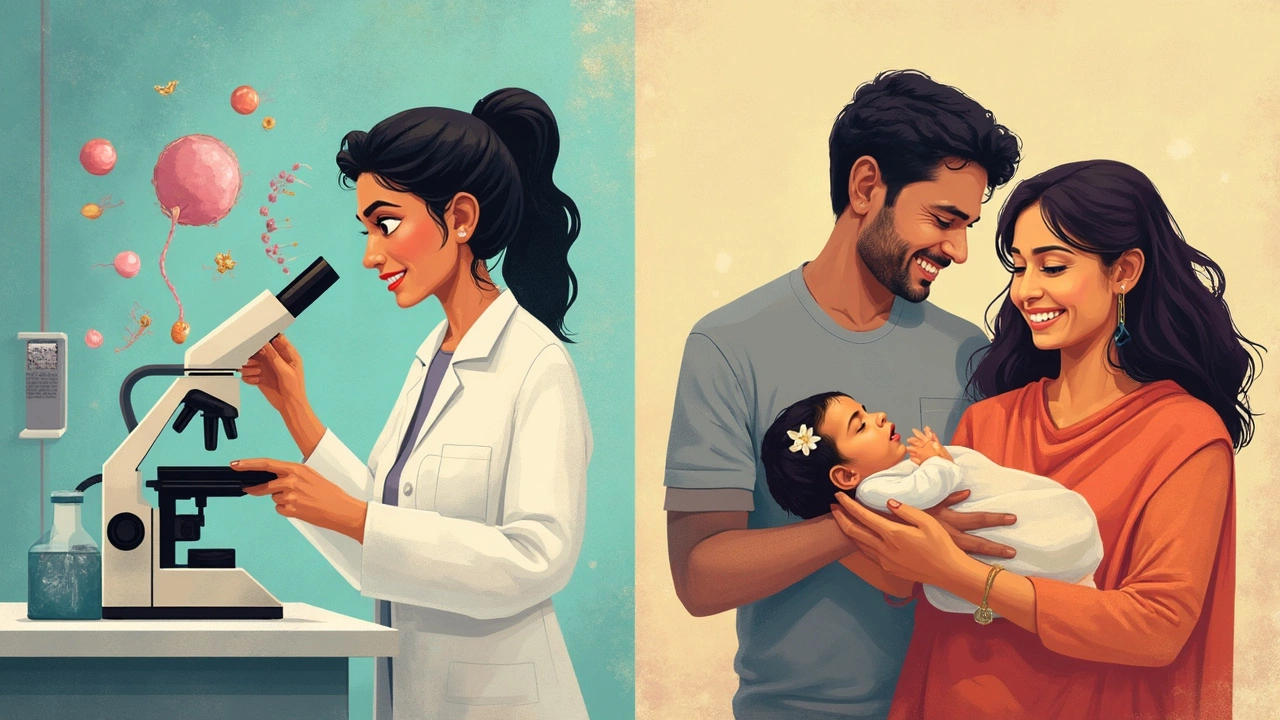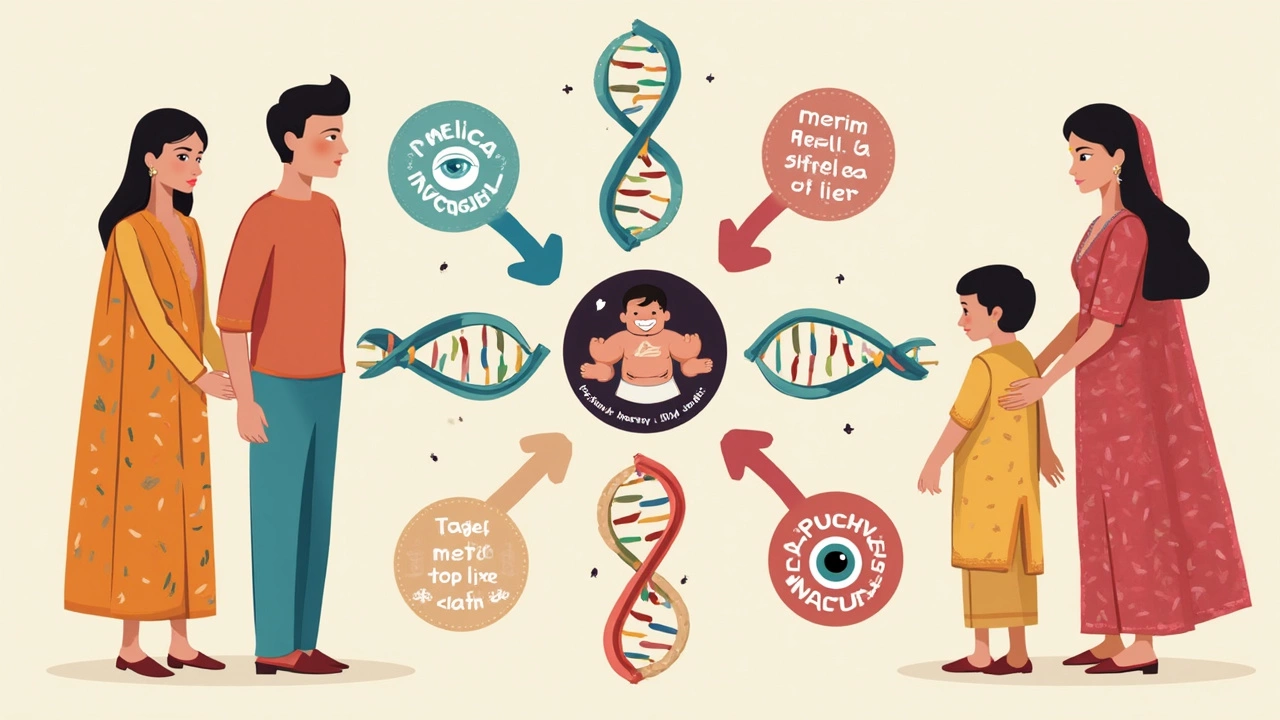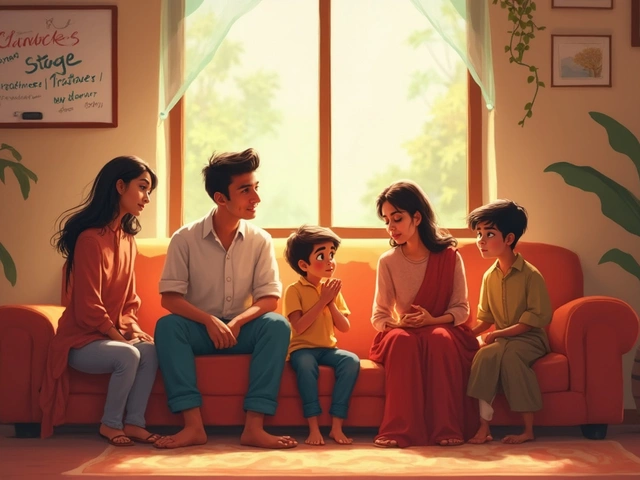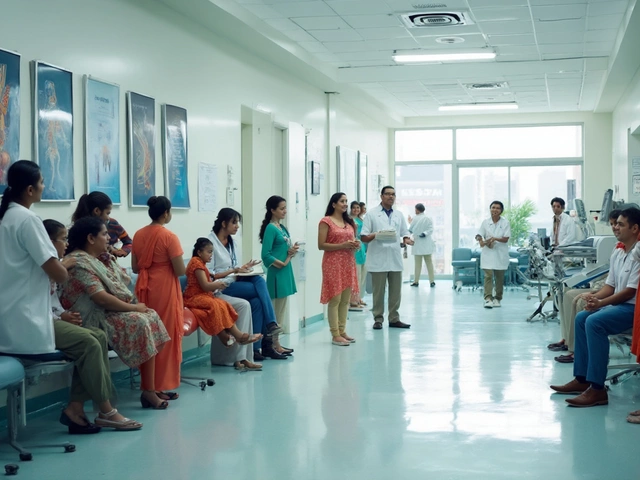How Do IVF Babies Look? Real Facts vs. Myths
- by Karthik Narayana
- May, 30 2025

If you’ve ever wondered whether IVF babies look different, you’re not alone. A ton of people secretly (and sometimes not so secretly) ask this. Maybe you’ve heard wild stories or seen clickbait articles claiming IVF kids look a certain way. News flash: There’s no 'IVF look'. Kids born by IVF have the same mix of traits as any other children. The science backs this up, and so do real-world families.
Here’s the basic scoop: IVF doesn’t change your child’s appearance. It’s all about genetics. Your baby will get their looks from the egg and sperm used—just like any naturally-conceived kid. So unless you’re using donor eggs or sperm, your baby could have your nose or your partner’s smile, totally naturally. Donor situations are a little different, and I’ll walk you through that later.
Worried about odd rumors, like IVF babies looking 'unusual' or not resembling their parents? That’s old-school nonsense. The only way your child would look different than expected is if you use someone else’s genes—not because of IVF itself. Let’s clear the air about those myths and talk real facts about IVF and how it shapes your family.
- Where the IVF Baby Look Question Comes From
- How Genetics Actually Work in IVF
- Do Donor Eggs or Sperm Change Looks?
- Health and Growth Myths: The Truth
- Stories from Real IVF Families
Where the IVF Baby Look Question Comes From
This whole question about how IVF babies look actually started back when IVF was new, in the late 1970s and early 1980s. Louise Brown, the world’s first "test-tube baby," was born in 1978. Back then, headlines loved to sensationalize the idea that babies born by science might be different somehow—maybe they'd look strange, or have "artificial" features. Forty years later, some of these myths are still floating around.
One reason people are so curious is because IVF sounds high-tech. The image of a scientist picking eggs and sperm in a lab makes folks wonder if something unusual happens. It’s easy to get confused if you haven’t really looked at how genetics work. Plus, when celebrities open up about IVF or post perfect baby photos on Instagram, it fuels the chat even more—some people end up thinking these babies are different in some way.
Here's something interesting: surveys in the US and UK over the last decade show that about 3-5% of all babies are now born using some type of assisted reproduction, like IVF. That's millions of kids worldwide. Despite this, some folks still google things like "Do IVF babies have bigger heads?" or "Can you tell a baby was born through IVF just by looking?"
The truth is, the way a baby looks is all about the DNA from egg and sperm, just like in any pregnancy. IVF is just a way to get those cells together. There aren’t any special genes added, removed, or edited. Check out the simple breakdown below to see what actually shapes a child’s features:
- DNA from parents (or donors) decides traits like hair color, eye color, height, and face shape.
- The IVF lab just helps the sperm and egg meet—they don’t mess with the DNA.
- Kids born with IVF grow and develop at the same rates as other kids.
Worried that data might say otherwise? Here’s a quick look at how common IVF really is today:
| Country | % of Births from IVF |
|---|---|
| UK | Just over 3% |
| Australia | More than 5% |
| USA | 2% (about 85,000 babies/year) |
| Sweden | Nearly 4% |
So, while rumors stick around, millions of families know firsthand: IVF babies look just like everyone else.
How Genetics Actually Work in IVF
IVF doesn’t mess with your genes or swap family traits. It just helps the sperm find the egg—everything else about your baby’s looks comes straight from the same DNA rules as any other kid. Your child’s hair color, nose shape, eye color, and even weird quirks like how they sneeze from sunlight all come from the genetic code passed down by the egg and sperm you use.
When doctors combine the egg and sperm in the lab, nothing funky happens to the genes. So, if both you and your partner have brown eyes, chances are your IVF baby will too. If your partner’s family has big ears and yours doesn’t, it’s still a tossup, just like always.
Here’s a quick breakdown of how it works:
- The IVF lab simply mimics what happens in nature, just without the, well, bedroom part.
- The scientists pick the best quality egg and sperm. (That doesn’t mean they pick looks, just healthiest cells—your actual DNA doesn’t get edited or changed.)
- If you use your own egg and sperm, your baby is as closely related to you as any naturally conceived child.
- Genes from both sides mix and mingle—so baby could look like Mom, Dad, Grandma, or someone from way back.
Worried about the chance of something getting switched or odd during the process? Clinics have super strict checks, barcodes, and double-checking to make sure the right egg meets the right sperm. According to a 2023 report from the Society for Assisted Reproductive Technology, mistakes are extremely rare—less than 0.01% of IVF cycles experience any kind of embryo mix-up.
Let’s take a look at what genetic traits typically get passed on, in IVF or not:
| Trait | Inherited by | More Info |
|---|---|---|
| Eye Color | Both parents | Classic example of genes mixing |
| Blood Type | Both parents | No influence by IVF method |
| Dimples | One parent needs gene | Random, like natural conception |
| Height | Both parents + nutrition | Genes and environment |
Dr. Eve Feinberg, a fertility specialist at Northwestern University, sums it up best:
“IVF is simply a method for bringing eggs and sperm together. The resulting child is genetically the same as one conceived naturally, assuming the parents’ own eggs and sperm are used.”
So next time you hear someone suggest IVF babies have a special look, you’ll know that’s just not how the science works.

Do Donor Eggs or Sperm Change Looks?
This is where things get interesting. If you use donor eggs or sperm in IVF babies procedures, the final look of the child can definitely change. Here’s why: the baby’s appearance depends on the DNA from the sperm and egg. Use a donor, and that DNA’s coming from someone outside the parents.
So, if you use a donor egg, the baby will get half their genes from the donor. If you use donor sperm, same thing—half the genes are from the donor. If both egg and sperm are from donors, then only the intended parents' influence is environmental, not genetic.
Most clinics let you see photos and background info about donors. You can often pick someone who’s a similar height, build, or even eye color to you or your partner. Here are some real numbers from recent IVF cycles in the U.S.:
| IVF Type | How Many Babies Per Year | Main Genes Influence |
|---|---|---|
| Own Eggs & Sperm | Almost 250,000 | Both parents |
| Donor Egg | About 24,000 | Donor + one parent |
| Donor Sperm | About 30,000 | Donor + one parent |
| Both Donor Egg & Sperm | Roughly 5,000 | Both donors |
If you’re worried your kid won’t resemble you, it really depends on genetics. Here’s what parents usually do to match their looks:
- Pick a donor with similar traits, like skin tone, hair, or eye color.
- Look for donor family background, which some clinics provide.
- Some clinics even offer genetic matching tools based on a photo.
But even then, genetics can work in unexpected ways. Siblings born from the same two parents (or donors) can still look very different from each other. There’s no way to guarantee a child will look exactly like you, with or without a donor, but today’s process makes it easier for parents to find a close match.
Some cool research recently showed that kids born from donor eggs or sperm still often pick up looks or habits from the parent raising them, just by spending time together. So, biology matters, but family ties run more than skin deep.
Health and Growth Myths: The Truth
People love to speculate about IVF babies—are they really as healthy as other kids? Will they grow slower, or have weird medical issues? Here's what the science actually says.
Most research shows that IVF babies are just as healthy as babies conceived naturally. There are minor differences sometimes, mainly because parents doing IVF tend to be a bit older or might already have some medical challenges. Those things, more than IVF itself, can play a small part in certain risks.
If you’re worried about physical development, growth charts tell the same story: IVF kids hit height and weight milestones at the usual pace. There's no big gap in size or rate of development. Doctors keep a close eye on all babies in their first years, and you’ll see pretty quickly if anything is out of the ordinary—no matter how your baby was conceived.
Here’s what really matters for your baby’s health and growth:
- Regular prenatal care: Sticking to recommended doctor visits helps spot and manage any issues early.
- Good nutrition during pregnancy: Eating right lays the foundation for healthy development, IVF or not.
- Family history: Traits and risks are mostly passed down from your genetics, not the IVF process.
- Early bonding and care: Love and attention in the first weeks and months support growth and brain development.
One thing scientists have tracked is that, depending on the reason parents needed IVF, there can be a very slight increase in certain birth risks. But even then, it’s not about the IVF procedure changing the baby—it's about the parents' unique situations. Year after year, doctors find that the overwhelming majority of IVF kids are thriving, both physically and mentally.
If family or friends ask weird questions about health or growth, just remind them: Babies are individuals. No two develop exactly alike. But being born after IVF doesn't set anyone back. As long as your kid is getting regular check-ups, good food, and plenty of hugs, they're right on track.

Stories from Real IVF Families
Let’s get real—actual families who've gone through IVF will tell you straight up that their kids look just like them. If you check out any major parenting forum or even Reddit threads about IVF, it’s packed with photos and stories from parents showing off their mini-mes. When it comes to things like eye color, hair, or facial features, genetics always comes out on top, whether a baby is conceived naturally or through IVF.
For example, a 2022 study published in the journal Human Reproduction collected feedback from over 1,000 IVF families worldwide. More than 93% said their child looked the same as they expected based on their own families’ traits. Only parents who used donor eggs or sperm saw significant differences, which matches what doctors say too.
Here’s a quick look at the numbers from real-life data:
| Family Type | Percentage Reporting Resemblance |
|---|---|
| IVF with Own Genes | 93% |
| IVF with Donor Egg/Sperm | 48% |
| Natural Conception | 95% |
Talk to anyone who’s gone through this, and most will laugh at the idea of an ''IVF baby look.'' I spoke to Rhea, a mom from Bangalore, whose daughter was born via IVF in 2023. She jokes that her baby got her husband’s “stubborn eyebrows” and her own dimpled chin—traits that have run in both their families for generations. She actually says nobody has ever guessed they used IVF.
Another couple, Adam and Priya in Chennai, did use a donor egg. Their son looks more like Priya’s side on first glance, but as he’s grown, some features from Adam have become super obvious. It turns out nurture plays a big part too—kids pick up expressions and mannerisms from the people raising them, regardless of genetics.
Parents also mention that IVF doesn’t affect unique traits like birthmarks, left- or right-handedness, or even how babies laugh. These still pop up just as often as in any other kid. Families sometimes actually forget about the IVF part altogether. Kids are kids, and family resemblances show up in all the ways you’d expect.





Write a comment